Reebok 2008 Annual Report Download - page 62
Download and view the complete annual report
Please find page 62 of the 2008 Reebok annual report below. You can navigate through the pages in the report by either clicking on the pages listed below, or by using the keyword search tool below to find specific information within the annual report.-
 1
1 -
 2
2 -
 3
3 -
 4
4 -
 5
5 -
 6
6 -
 7
7 -
 8
8 -
 9
9 -
 10
10 -
 11
11 -
 12
12 -
 13
13 -
 14
14 -
 15
15 -
 16
16 -
 17
17 -
 18
18 -
 19
19 -
 20
20 -
 21
21 -
 22
22 -
 23
23 -
 24
24 -
 25
25 -
 26
26 -
 27
27 -
 28
28 -
 29
29 -
 30
30 -
 31
31 -
 32
32 -
 33
33 -
 34
34 -
 35
35 -
 36
36 -
 37
37 -
 38
38 -
 39
39 -
 40
40 -
 41
41 -
 42
42 -
 43
43 -
 44
44 -
 45
45 -
 46
46 -
 47
47 -
 48
48 -
 49
49 -
 50
50 -
 51
51 -
 52
52 -
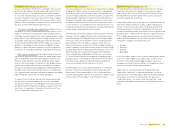 53
53 -
 54
54 -
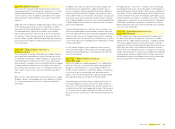 55
55 -
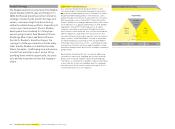 56
56 -
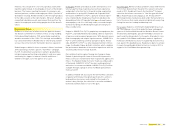 57
57 -
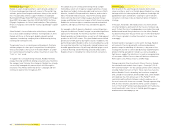 58
58 -
 59
59 -
 60
60 -
 61
61 -
 62
62 -
 63
63 -
 64
64 -
 65
65 -
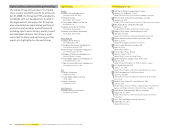 66
66 -
 67
67 -
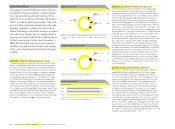 68
68 -
 69
69 -
 70
70 -
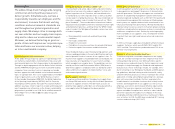 71
71 -
 72
72 -
 73
73 -
 74
74 -
 75
75 -
 76
76 -
 77
77 -
 78
78 -
 79
79 -
 80
80 -
 81
81 -
 82
82 -
 83
83 -
 84
84 -
 85
85 -
 86
86 -
 87
87 -
 88
88 -
 89
89 -
 90
90 -
 91
91 -
 92
92 -
 93
93 -
 94
94 -
 95
95 -
 96
96 -
 97
97 -
 98
98 -
 99
99 -
 100
100 -
 101
101 -
 102
102 -
 103
103 -
 104
104 -
 105
105 -
 106
106 -
 107
107 -
 108
108 -
 109
109 -
 110
110 -
 111
111 -
 112
112 -
 113
113 -
 114
114 -
 115
115 -
 116
116 -
 117
117 -
 118
118 -
 119
119 -
 120
120 -
 121
121 -
 122
122 -
 123
123 -
 124
124 -
 125
125 -
 126
126 -
 127
127 -
 128
128 -
 129
129 -
 130
130 -
 131
131 -
 132
132 -
 133
133 -
 134
134 -
 135
135 -
 136
136 -
 137
137 -
 138
138 -
 139
139 -
 140
140 -
 141
141 -
 142
142 -
 143
143 -
 144
144 -
 145
145 -
 146
146 -
 147
147 -
 148
148 -
 149
149 -
 150
150 -
 151
151 -
 152
152 -
 153
153 -
 154
154 -
 155
155 -
 156
156 -
 157
157 -
 158
158 -
 159
159 -
 160
160 -
 161
161 -
 162
162 -
 163
163 -
 164
164 -
 165
165 -
 166
166 -
 167
167 -
 168
168 -
 169
169 -
 170
170 -
 171
171 -
 172
172 -
 173
173 -
 174
174 -
 175
175 -
 176
176 -
 177
177 -
 178
178 -
 179
179 -
 180
180 -
 181
181 -
 182
182 -
 183
183 -
 184
184 -
 185
185 -
 186
186 -
 187
187 -
 188
188 -
 189
189 -
 190
190 -
 191
191 -
 192
192 -
 193
193 -
 194
194 -
 195
195 -
 196
196 -
 197
197 -
 198
198 -
 199
199 -
 200
200 -
 201
201 -
 202
202 -
 203
203 -
 204
204 -
 205
205 -
 206
206 -
 207
207 -
 208
208 -
 209
209 -
 210
210 -
 211
211 -
 212
212 -
 213
213 -
 214
214 -
 215
215 -
 216
216 -
 217
217 -
 218
218 -
 219
219 -
 220
220
 |
 |

058 Group Management Report – Our Group Structure and Strategy — Internal Group Management System
Free cash fl ow components
1) Excluding acquisitions and fi nance leases.
Internal Group Management System
The adidas Group’s central planning and con-
trolling system is designed to continually
increase the value of our Group and brands to
maximise shareholder value. By improving
our top- and bottom-line performance and
optimising the use of invested capital, we aim to
maximise free cash fl ow generation. This is our
principal goal for increasing shareholder
value.
Management utilises a variety of decision-
making tools to assess our current perfor-
mance and to align future strategic and
investment decisions to best utilise com
mer-
cial and organisational opportunities.
Free cash fl ow as Internal Group Management focus
The cornerstone of our Group’s Internal Management System
is our focus on free cash fl ow generation, which we believe is
the most important driver to sustain and increase shareholder
value. Free cash fl ow is comprised of operating components
(operating profi t, change in operating working capital and
capital expenditure) as well as non-operating components such
as fi nancial expenses and taxes. To maximise free cash fl ow
generation across our multi-brand organisation, brand man-
agement has direct responsibility for improving operating profi t
as well as optimising operating working capital and capital
expenditure. Non-operating items such as fi nancial expenses
and taxes are managed centrally by the Group Treasury and
Taxes departments. To keep Group and brand management
focused on long-term performance improvements, a portion
of the responsible managers’ total compensation is variable
and linked to a combination of operating profi t, operating
working capital development, Group earnings before taxes, or
relative /absolute stock price performance.
Operating margin as key performance indicator
of operational progress
Operating margin (defi ned as operating profi t as a percent-
age of net sales) is our Group’s most important measure of
operational success. It highlights the quality of our top line and
operational effi ciency.
Operating profi t
Operating working capital
Capital expenditure 1)
Non-operating components
Free
cash fl ow
